Quantum computers are expected to solve some of the world’s most complex problems. Fabricating interconnects is one of the most complex problems when building quantum computers. Quantum computers need connectors that can withstand cryogenic temperatures, with non-magnetic construction, that operate at microwave frequencies with low losses to reduce heating and improve data transfer. High-density hermetically sealed designs are required to reach through the multiple stages of the dilution fridge ‘chandelier’ and get signal access points as close as possible to the quantum processors.
The control and read-out lines (I/Os) in quantum computers are implemented in a massively parallel configuration using conventional coaxial cables. As the number of qubits in quantum computers grows, so does the need for high-density connectivity to the outside world.
This FAQ reviews the current state of the art for quantum computer interconnects, presents several examples of recently introduced high-density alternatives, and closes by looking at work to develop high-density interconnects within the quantum computer itself.
As quantum computers grow in complexity from a handful of qubits to hundreds or thousands of qubits, the demand for high-density interconnects multiplies. Quantum computers usually operate in a cryogenic dilution refrigerator (the “fridge”). A typical fridge design has a vacuum-sealed top with a series of cooling stages below, with the bottom stage containing the qubits at less than 20 milliKelvin (mK). A heat shielding bulkhead separates the fridge sections to minimize heat transfer. The connections between stages must provide high levels of thermal insulation.
Connecting the quantum bits at the bottom of the fridge to the room temperature control electronics is a complex cabling task. Adding to the challenges is the fact that qubits are extremely fragile. Some of the requirements for connectors in quantum computers are:
- Non-magnetic materials and plating
- Maximum susceptibility of 10-5, maximum, with no field distortion
- SMA connectors with hex nut couplings for non-space critical systems can support spacing of about 16 mm
- SMPM connectors for space critical systems can support spacings of 4.75 mm and provide simple push-to-mate connections
- DC to 26.5 GHz (for SMA connectors) and DC to 65 GHz (for SMPM connectors)
Depending on the connector configuration, standard ISO 100 fridge plates can handle up to 120 coax lines (Figure 1). Custom plate designs and connectors can support much higher interconnect densities.
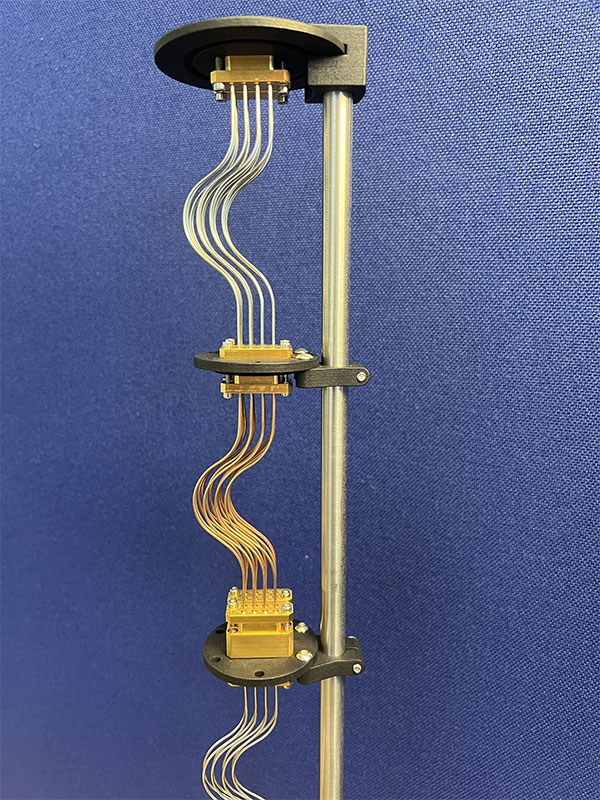
Density matters
As the number of qubits in quantum computers grows, so does the need for high-density connector solutions. Several alternatives have been and are being developed to address that need. One group has developed flexible microwave cables for quantum computers. These flex cable assemblies support simplified and high-density connectivity solutions, including (Figure 2):
- Scalable, compact form factor
- Low thermal conductivity
- Simplified installation
- Integrated filtering and signal attenuation
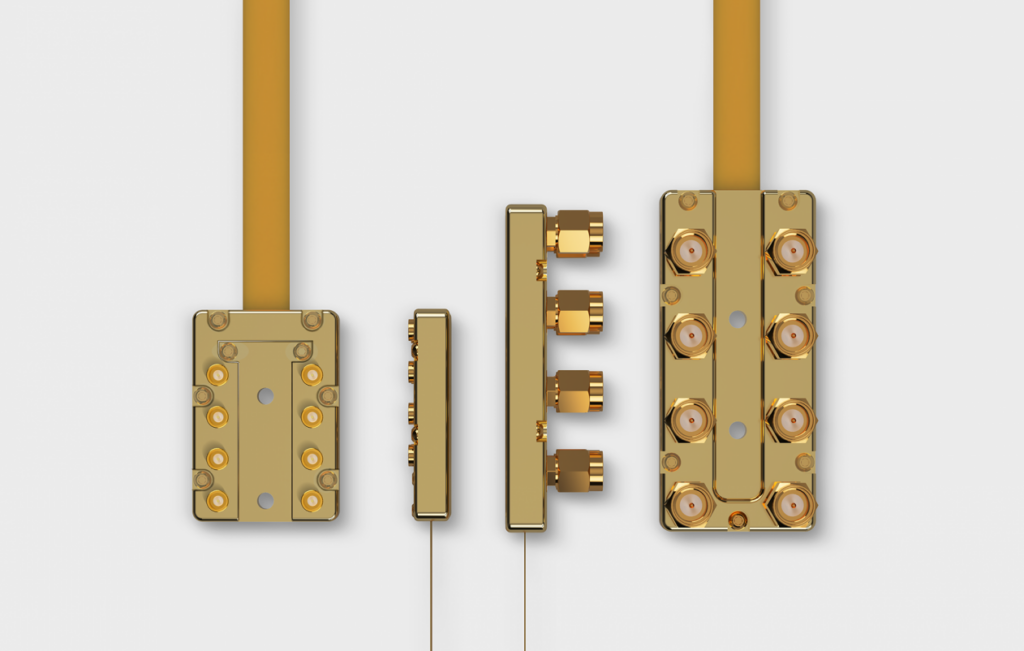
Another solution is based on a high-density installation of constant impedance contacts to provide a board-level solution. The system is designed to mate with existing fridge and cryostat RF lines and provide a high-density solution rated for 18 GHz. The system includes board mount receptacle contacts and cable harnesses that can connect to SMA connectors. It’s available in three different housing configurations, the largest supporting 188 connections using four small-footprint sub housings. Depending on the model, up to 47 microwave connectors can be mated with a single plug-in operation.
This system can replace existing microwave connectors and cables with a higher-density solution linking external microwave cables through the hermetic header into each level of a fridge or cryostat down to the qubits. The connectors feature blind mate constant impedance and non-magnetic contacts. It can include embedded attenuators for mass connection of multiple functions with a single unit that replaces SMA connectors and attenuators. Housings are available to retrofit existing fridges with up to 64 connections per port, enabling the mating of all 64 lines with a single plug operation (Figure 3).
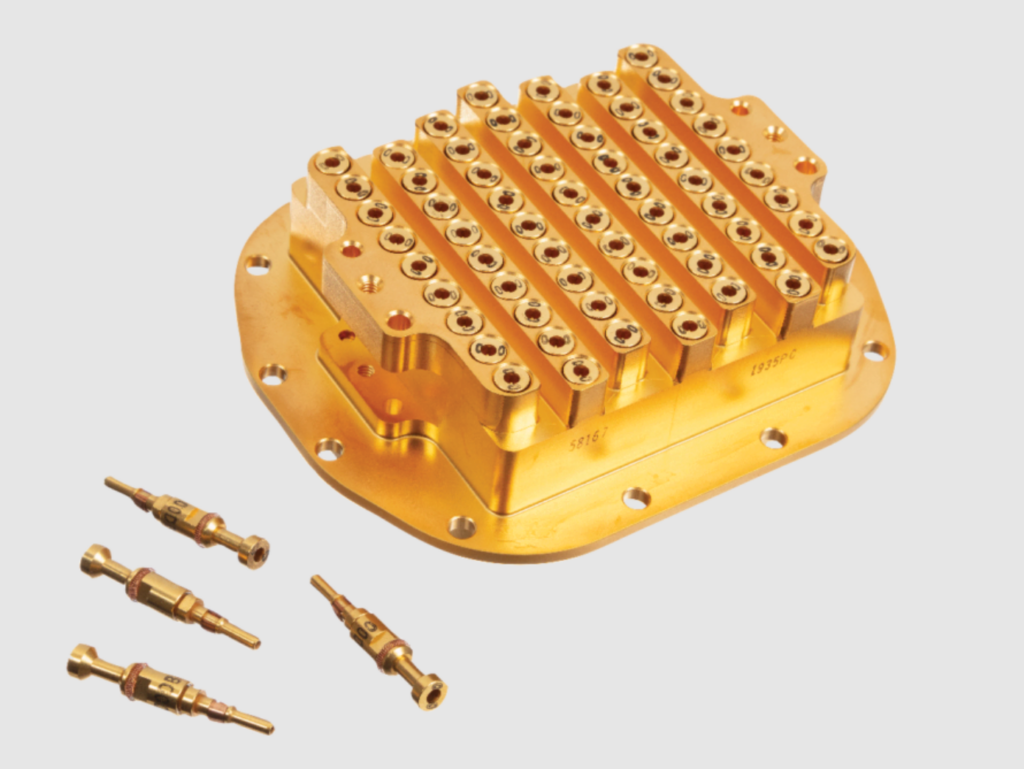
Ganged coaxial attenuators and connectors
Ganged coaxial attenuators and connectors are available for quantum computer fridges that support many high-speed lines. They are fabricated with leading-edge materials like oxygen-free high thermal conductivity (OFHC), copper, and nickel-chromium (NiCr) on thermally conductive crystalline quartz dielectrics. These ganged assemblies substantially increase interconnect densities with minimal changes in attenuation down to 3 mK. They support bandwidths up to 12 GHz and have insertion losses of ±1 dB at 5 GHz. The 16-channel form factor is 94% smaller than conventional SMA-style devices and fits into a 290 mm2 area compared to almost 5,000 mm2 for legacy designs (Figure 4).
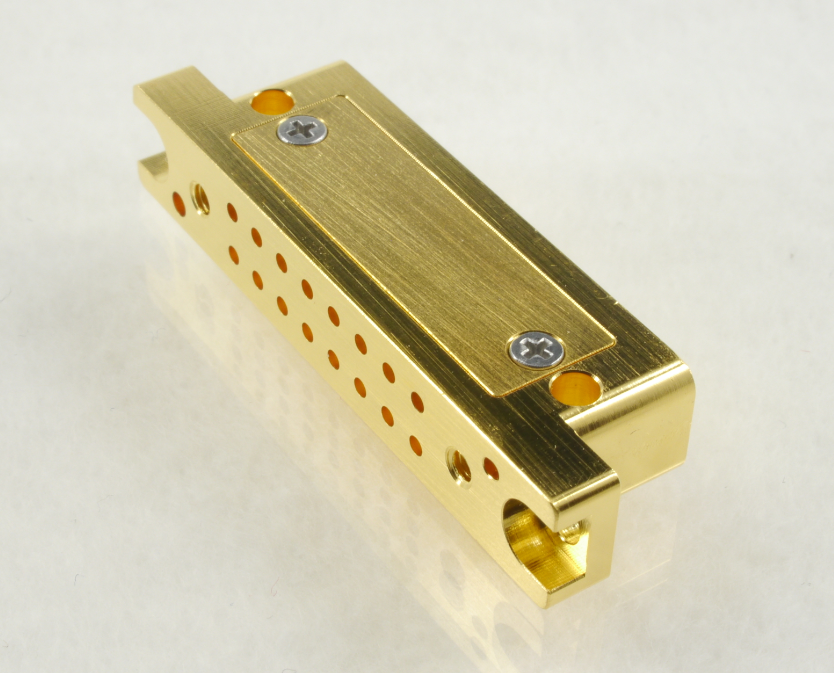
Extensible quantum computer interconnects.
In addition to the difficulties of connecting the quantum processor to the outside world, quantum computer designers are faced with challenges related to interconnecting the individual qubits into a single computing machine. Since quantum computers are intrinsically different than classical computers, classical information communication techniques do not apply to quantum computers. The only similarity is that the information must be accurately transmitted and received.
Quantum information is more complex than classical information. Instead of ones and zeros, quantum information can be both one and zero simultaneously through a phenomenon called superposition. And quantum information can be carried by photons of light. As a result, quantum information is very fragile and can’t be transported using traditional approaches.
Waveguides are used to provide the interconnects needed by quantum computers. Waveguides can be unidirectional or bidirectional. Conventional waveguides are unidirectional and move photons in only one direction, from left to right or from right to left. Using single-direction waveguides makes it challenging to scale up quantum computers and their interconnects. Also, single-direction waveguides need additional components to maintain their directionality, introducing the possibility of communication errors.
When a qubit emits a photon, the direction in which the photon travels is completely random unless an error-prone directional waveguide is used (Figure 5). To overcome that limitation, researchers have used two qubits and a property called quantum interference to affect the probability amplitudes and ensure the emitted photon travels in the desired direction. The two qubits are placed in an entangled state of single excitation called a Bell state.
When the qubits are in an entangled Bell state, the photon is emitted simultaneously at two locations to the waveguide, and the two emissions interfere with each other. The resulting photon emission must travel to the right or left depending on the precise phase within the Bell state. By controlling the Bell state phase, it’s then possible to control the direction that the photon travels through the waveguide. Reversing the same technique enables the photon to be received at a second module tuned to the same energy frequency as the photon.
Using the Bell state to control the direction of photon travel resulted in 96% fidelity; if the Bell state was tuned to send the photon to the right, it went in that direction 96% of the time. The current embodiment only includes a single module. The next step will be to use the same techniques for multiple modules to emit and absorb photons (transmit and receive quantum information). If successful, integrating multiple modules could lead to developing an extensible quantum computer architecture that links many small quantum processor modules into a larger and more powerful quantum computer.
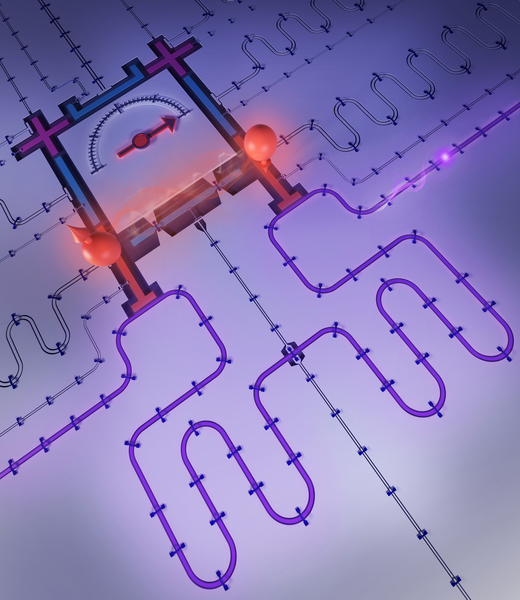
Summary
As quantum computers continue to increase in the number of qubits they include, their need for high-density connectivity to the outside world also grows. Several new approaches have been introduced to support quantum computers’ high-density connectivity, including ganged connectors, hermetic connector headers, and flex cables. Research is also underway to enable the extensible connection of multiple small quantum modules into a single large and powerful quantum computer.
References
Advancing RF Density with the Quantum-Proven PkZ, The Phoenix Company of Chicago
High Density Connectors, CryoCoax
High-Density Ganged Coaxial Attenuators to Support Scale up of Cryogenic and Quantum Computing Applications, Ardent Concepts
New quantum computing architecture could be used to connect large-scale devices, MIT
On-demand directional microwave photon emission using waveguide quantum electrodynamics, Nature Physics
Quantum Computing Hardware, Delft Circuits

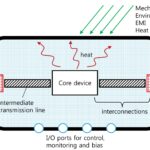
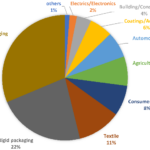
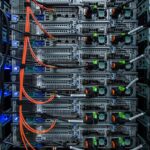
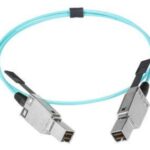
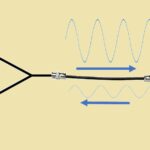
Leave a Reply
You must be logged in to post a comment.